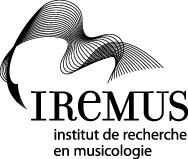WRITINGS
DEGUCHI Tomoko
Forms of temporal experience in the music of Toru Takemitsu
Edition: Ph.D. Dissertation, State University of New York at Buffalo, 237p.
Date: 2005
Region: JAPAN
Origin: UNITED STATES
Type of media: Grey
Language: English
Editor: M.B.
Comment:
Abstract:
This dissertation integrates the studies of my three primary interests: the concept of time in music, how this concept of time influences the perception of form, and the music of Japanese composer Toru Takemitsu (1930-1996). The analyses are based on the standpoint that the temporal mode in Takemitsu's music is primarily Western; Western in the sense that his music is linear, has a definite beginning (but not necessarily a definite ending), and the musical events have continuous relationships with each other. Also given that music can only be experienced in time, the subject of time engages the issue of musical form. Listeners can experience structure and form in Takemitsu's music through a dynamic process of form-building. The resultant form of the three compositions examined reveals strong commonalities with Japanese sensitivities and aesthetics.
The process of form-building is utilized in the analyses of the three compositions that are the focus of this dissertation. In Chapter II, I discuss the recurring three-note figures in the melodic line of the Requiem that are embedded in the small and large scale repetitions. This simulates a palindromic formation which gives rise to what I call the "cyclic-time form." I use the concept of cyclic time as a representative of Eastern aesthetics that parallels the Requiem 's perception of form. Piano Distance best represents the concept of form-building. The perception of phrase formation solely comes from the relationships between the expectation and the retention of musical events. I make use of the concept of Japanese consciousness, "force that becomes one after another" to illustrate the phrase formation of Piano Distance . In Rain Tree , certain parts of the music come to obtain two formal functions, in which the interpretation is based on the events happening before and after those parts. The concepts of inter-subjectivity and non-subjectivity can be associated with the Japanese mode of narrative found in Rain Tree . In the final chapter, I return to the topic of how time, viewed as an unending cyclic entity, affects musical form. I analyze and explore the significance of the music of the Japanese Noh flute (nohkan ) in Akira Kurosawa's film Ran , and show how Takemitsu uses flute music and an Eastern conception of time to accommodate Shakespeare's King Lear (as retold by Kurosawa through Ran ) a work that relies on Western notions of linearity and development. I conclude that my analyses reveal that Japanese aesthetics intersect with the perception of form in Takemitsu's music.





